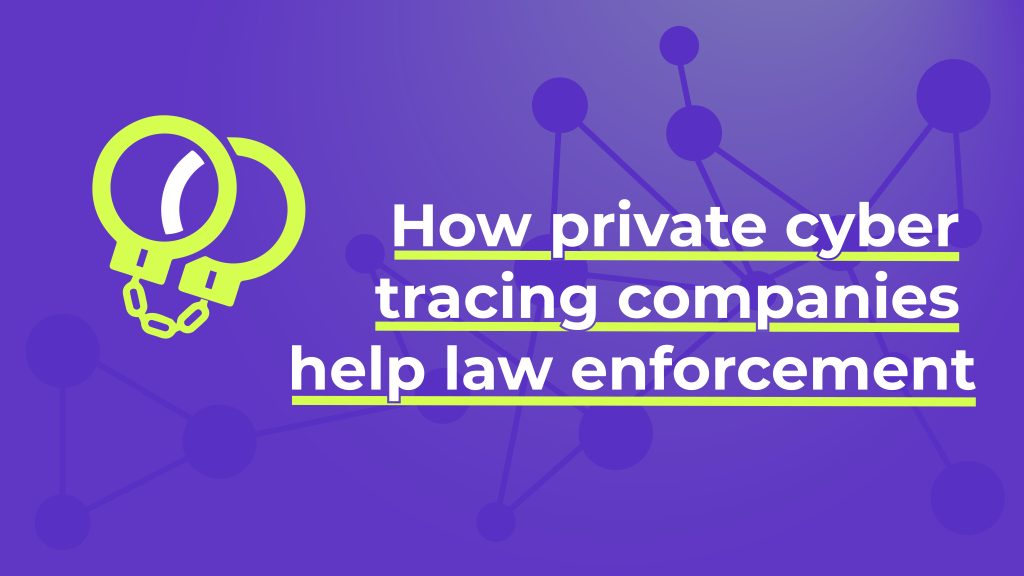Recently, many people have heard or talked about the term “cyber tracing,” even more so as it aims to support law enforcement.
In this article, you will be driven around the space of cyber tracing services provided by some private companies and how they complement the efforts of law enforcement agencies.
It will be discussed under the following subheadings:
~ Introduction to cyber tracing
~ Common cyber crimes that are punishable under the law but can be curbed effectively via cyber tracing
~ Procedures and tools involved in cyber tracing that are significant in law enforcement
~ How does cyber tracing aid law enforcement?
Introduction to cyber tracing
Cyber tracing or cyber tracking involves procedures or methods that launch investigations into cyber activities to detect fraudulent cyber activities or any other cyber activity that might harm internet users or their digital assets.
Every activity on the internet always leaves a mark that makes cyber tracing very possible. Cyber tracking monitors internet activities in a backward fashion from the recipient to the user, which helps to uncover instances where internet activities begin to turn fraudulent. This plays a very crucial role in law enforcement.
Common cybercrimes that are punishable under the law but can be curbed effectively via cyber tracing
Almost all cybercrimes can be tracked and monitored with the aid of an effective cyber tracing procedure. Some of these common cybercrimes include:
• Phishing: This kind of fraudulent message aims to trick unsuspecting victims into revealing sensitive and private information that can be used to scam them. Phishing is a punishable offense under the law, and offenders are not spared once they are caught
• Ransomware: This is another punishable offense under the rule of law. It is in the form of malware that threatens to expose computer and internet users’ sensitive and private information until a ransom is paid.
• Website Spoofing: This is a very common scam scheme that involves creating replicas of very popular websites to steal unsuspecting users’ private and sensitive information.
• Payment Card Fraud: This is another common scam scheme involving a payment card such as a debit or a credit card. Cybercriminals use secure information from these payment cards to make unauthorized purchases in the name of unsuspecting victims.
• Account hacking: This is simply unauthorized access into secured accounts of unsuspecting victims.
Other common cybercrimes that are punishable under the law include:
• Harassment
• Child pornography & solicitation
• Intellectual property theft, etc.
All the cybercrimes mentioned above are grave offenses, and offenders, when caught, will be made to pay dearly. In the past, launching investigations into cases involving cybercrimes always posed a difficult task. However, with the advent of cyber tracing and its likes, the procedure involved in investigating cybercrimes is now simplified and more effective.
This is very evident in the surge in the number of cyber criminals that have been brought to book in recent years following investigations through cyber tracing.
Procedures and tools involved in cyber tracing that are significant in law enforcement
Some procedures must be followed in cyber tracing to ensure effective cyber tracing operations. These procedures will be highlighted below:
1. Background check: This procedure involves understanding the atmosphere of the crime using readily available facts obtained from both digital and physical investigations, all aimed toward law enforcement.
2. Information gathering phase: This phase involves the collection of every available information that will be significant in bringing cyber criminals to book.
3. Tracking or tracing suspects that may be linked to cyber fraud: This procedure is the longest and often involves legal procedures. Its success depends on how well the above two procedures are carried out. This procedure is carried out to uncover the culprits behind cyber fraud, after which law enforcement agencies apprehend them.
How does cyber tracing aid law enforcement?
One of the main significance of cyber tracing is consolidating all efforts to enforce the rule of law via investigations and data analysis.
With the assistance of private cyber tracing agencies, enforcing laws against cybercrimes has become easier and more effective. This is because law enforcement agencies adopt factual information obtained through cyber tracing into their regulatory activities on enforcing laws against cybercrimes.
Final Words
The role of private cyber tracing companies in enforcing the rule of law cannot be over-emphasized because they assist law enforcement agencies in uncovering the negative activities of cyber criminals and ensure that these offenders face the wrath of the law.

